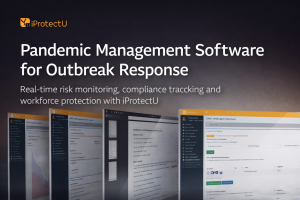What is ISO 45001?
ISO 45001 is an international standard which outlines requirements for an organisation’s occupational health and safety (OH&S) management system. It provides a framework to manage risks and improve OH&S performance. The standard specifies criteria for the OH&S policy, objectives, planning, implementation, operation, auditing and review.
Planning, Clause 6, is the Cornerstone of ISO 45001 Success
Planning involves proactively identifying risks and opportunities that could affect OH&S performance. By planning effectively, organisations can establish clear procedures for addressing risks, preventing incidents, and continually improving safety management.
In addition, planning ensures the system adapts to changing circumstances. New legislation, technological advancements, or even business expansions can all highlight new safety considerations. Planning is the bridge between good intentions and a safe workplace.

Why Planning is Essential for ISO 45001 Success
Measurable Objectives setting and Progress Tracking: Leaders should set performance targets and goals which are clear, measurable, realistic, relevant, and linked to safety objectives. These include both leading (proactive) and lagging (reactive) indicators. An example of leading indicators may include safety training. Lagging indicators may include the rate of incidents in the workplace.
Alignment with Organisational Goals: Effective planning allows leaders of organisations to integrate OH&S objectives with the overall business goals. This ensures safety considerations are factored into all departments and operations.
Resource Allocation: The plan must identify necessary resources such as budget and skilled personnel. By identifying hazards and risks, leaders can allocate resources strategically towards the areas posing the greatest threat to safety, ensuring their efforts have the biggest impact.
Proactive Risk Management: Planning allows leaders to proactively identify hazards – from machinery malfunction to ergonomic issues. Risks can then be assessed, and suitable control measures implemented before avoidable incidents occur.
Demonstration of Commitment: A structured plan demonstrates an organisation’s commitment to OH&S, which is important for gaining employee buy-in. By clearly outlining the plan’s goals and employee roles, leaders can create a sense of ownership and encourage active participation in health and safety management.
Planning Subclauses
Actions to address risks and opportunities: This requires organisations to identify and evaluate all risks and opportunities which have the potential to affect the OH&S management system. The organisation must then determine the necessary control measures to address these risks and opportunities to ensure the overall effectiveness of the management system.
OH&S Management System objectives and planning to achieve them: This emphasises the importance of setting OH&S objectives and goals which are consistent with the overall occupational health and safety strategy. The organisation should develop plans to achieve these objectives, while accounting for the identified risks and opportunities.
Planning for changes: This requires the organisation to identify changes which might occur and assess their potential impact on the OH&S management system. Such changes may be operational, organisational, or technological. The organisation should implement procedures for managing these changes.
Integration of OH&S Management System requirements into the organisation’s business processes: This emphasises the importance of integrating the OH&S requirements into the overall business processes within the organisation, to ensure the flawless functioning of the system.
Documented information: This requires the organisation to establish and maintain documented information, as related to the OH&S Management System. This includes objectives, policies, procedures, plans, and records. This clause has the potential to bring ultimate success, however it may be overlooked if an organisation’s diligence is not maintained.
Communication: This emphasises the importance of constructive communication between all levels of the organisation, to establish the smooth functioning of the OH&S management system.
Effective planning empowers organisations to achieve ISO 45001 certification and foster a culture of safety. Without having a robust plan in place, organisations leave their employees’ safety to luck, a gamble no organisation should ever take.
Achieve ISO 45001 with iProtectU ISO Auditing Software
iProtectU EHS Software is a fully integrated modular software with mobile app functionality that can help organisations achieve ISO 45001 certification. iProtectU EHS Software includes a comprehensive set of features, including risk assessment, policies, safe systems of work, operational controls, training and auditing. Our quality management software is trusted by quality professionals, auditors and our clients.
Get in touch today to discuss how we can help your organisation to achieve and maintain ISO 45001 certification.









